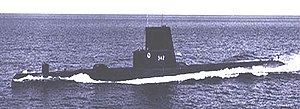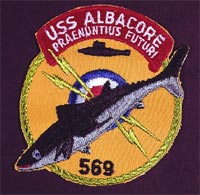
USS Albacore (AGSS-569) is a unique research submarine that pioneered the American version of the teardrop hull form of modern submarines. The revolutionary design was derived from extensive hydrodynamic and wind tunnel testing, with an emphasis on underwater speed and maneuverability. She was the third vessel of the United States Navy to be named for the albacore.

USS Atule (SS/AGSS-403), a Balao-class submarine, was the only ship of the United States Navy to be named for the atule.

USS Cavalla (SS/SSK/AGSS-244), a Gato-class submarine, is a submarine of the United States Navy named for a salt water fish, best known for sinking the Japanese aircraft carrier Shōkaku.

USS Conger (SS/AGSS-477), a Tench-class submarine, was the only ship of the United States Navy to be named for the conger, an eel found in warm seas at moderate depths, common to both coasts of the Atlantic Ocean.

USS Torsk, hull number SS-423, is a Tench-class submarine built for the United States Navy during World War II. Armed with ten torpedo tubes, the Tench-class submarines were incremental developments of the highly-successful Gato-class submarines that formed the backbone of the US Navy's submarine force during the war. Torsk was laid down at the Portsmouth Navy Yard in June 1944, was launched in September that year, and commissioned in December.
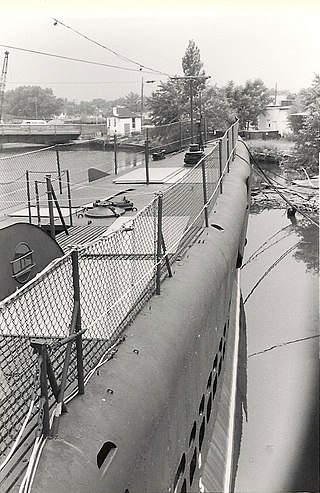
USS Ling is a Balao-class submarine of the United States Navy, named for the ling fish, also known as the cobia. The vessel was built during World War II, but was completed in the final months of the conflict and so saw no action. She was placed in reserve in 1946 until being converted into a training ship in 1960. In 1971, she was struck from the naval register and donated to the Submarine Memorial Association for use as a museum ship. The ship was grounded in the Hackensack River at the former location of the defunct New Jersey Naval Museum in Hackensack, New Jersey. Since 2016, Ling has been inaccessible to the public.
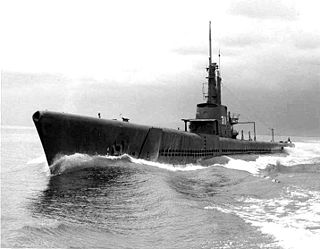
USS Archerfish (SS/AGSS-311) was a Balao-class submarine. She was the first ship of the United States Navy to be named for the archerfish. Archerfish is best known for sinking the Japanese aircraft carrier Shinano in November 1944, the largest warship ever sunk by a submarine. For this achievement, she received a Presidential Unit Citation after World War II.

USS Requin (SS/SSR/AGSS/IXSS-481), a Tench-class submarine, was the only ship of the United States Navy to be named after the requin, French for shark. Since 1990 it has been a museum ship at the Kamin Science Center in Pittsburgh, Pennsylvania.

USS Angler (SS-240), a Gato-class submarine, was the only ship of the United States Navy to be named for the anglerfish.

USS Grouper (SS/SSK/AGSS-214), a Gato-class submarine, was the only ship of the United States Navy to be named for the grouper.

USS Croaker (SS/SSK/AGSS/IXSS-246), a Gato-class submarine, was the first ship of the United States Navy to be named for the croaker, any of various fishes which make throbbing or drumming noises.

USS Rasher (SS/SSR/AGSS/IXSS-269), a Gato-class submarine, was a ship of the United States Navy named for the rasher, or vermilion rockfish, a fish found along the California coast.
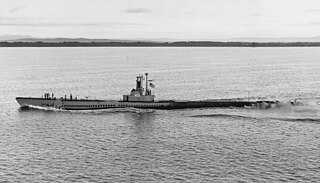
USS Sea Dog (SS-401/AGSS-401) was a Balao-class submarine in the United States Navy. She was the first ship to be named for the dogfish, a small shark of the North Atlantic, considered destructive by fishermen.

USS Roncador (SS/AGSS/IXSS-301), a Balao-class submarine, was a ship of the United States Navy named for the roncador.
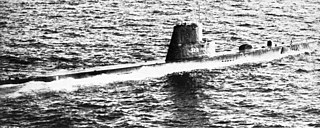
USS Charr (SS/AGSS-328), a Balao-class submarine, was a ship of the United States Navy named for the charr.

USS Guavina (SS/SSO/AGSS/AOSS-362), a Gato-class submarine, was a ship of the United States Navy named for the guavina, a fish which may reach a length of 2 feet (0.6 m) indigenous to the West Indies and the Atlantic coasts of Central America and Mexico.

The first USS Spadefish (SS/AGSS-411), a Balao-class submarine, was the first ship of the United States Navy to be named for the spadefish. Although she was commissioned late in the war and spent only one year in the Pacific war zone, she was able to run up a record of 88,091 tons in 21 ships and numerous trawlers sunk.

USS Pintado (SS-387/AGSS-387), a Balao-class submarine, was the first ship of the United States Navy to be named for the pintado.

USS Piranha (SS-389/AGSS-389), a Balao-class submarine, was the only ship of the United States Navy to be named for the piranha. Piranha conducted six war patrols during World War II, receiving five battle stars. She was scrapped in 1970.

USS Spikefish (SS/AGSS-404), a Balao-class submarine, was a ship of the United States Navy, named for the spikefish. She was the first United States submarine to record 10,000 dives.
